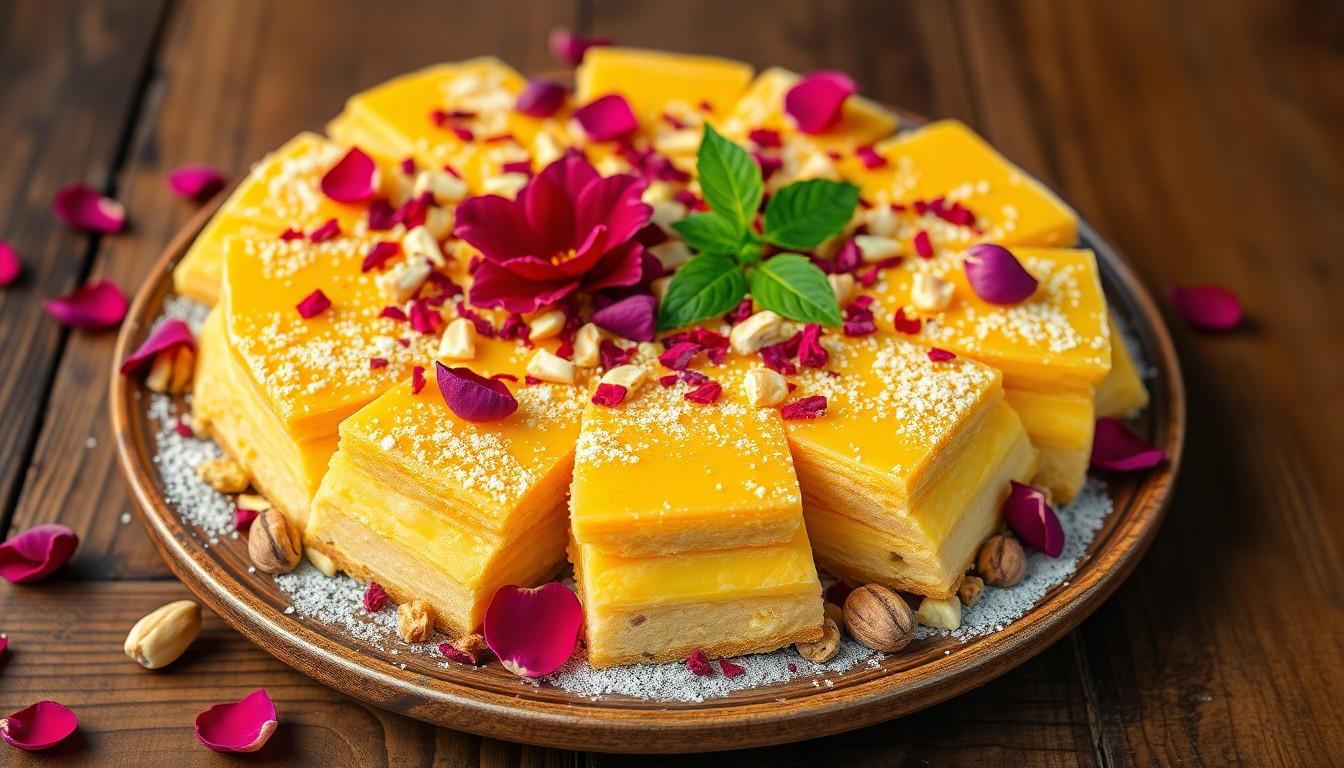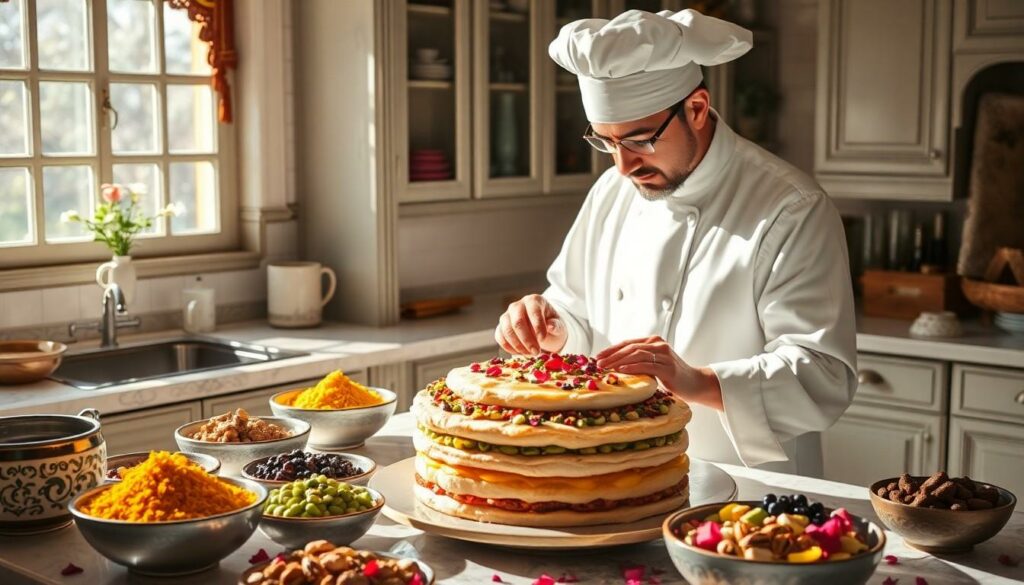Ever wondered what mysterious ingredients lurk inside that peculiar-sounding fudholyvaz? This unique concoction has sparked curiosity and confusion among food enthusiasts worldwide, leaving many scratching their heads while trying to pronounce its name.
What’s In Fudholyvaz
Fudholyvaz originated in the mountainous regions of ancient Persia during the 8th century CE. Persian nobles crafted this complex dish combining rare spices, aromatic herbs, nuts, dried fruits with locally sourced ingredients. The name “fudholyvaz” derives from two Persian words: “fudhol” meaning divine and “vaz” meaning mixture.
Traditional preparation of fudholyvaz involves three distinct layers:
-
- Base layer: Ground walnuts mixed with saffron-infused honey
-
- Middle layer: Spiced dates combined with pistachios cardamom
-
- Top layer: Rose water-flavored almond paste with dried mulberries
Key ingredients found in authentic fudholyvaz include:
| Ingredient |
Purpose |
| Persian saffron |
Adds color aroma |
| Damask rose water |
Provides floral notes |
| Kerman pistachios |
Creates texture |
| Caspian walnuts |
Forms base foundation |
| Mountain honey |
Binds ingredients |
Expert Persian chefs prepare fudholyvaz during significant celebrations festivals religious ceremonies. Serving temperature plays a crucial role in experiencing its full flavor profile at precisely 18°C (64°F). The complex preparation process takes 3-4 days requiring specific timing for each layer to set properly.
Modern variations maintain the core three-layer structure while incorporating regional ingredients. Contemporary Persian restaurants serve fudholyvaz in small portions due to its rich concentrated flavors. Each serving contains approximately 15-20 grams allowing diners to appreciate its intricate taste combinations.
Key Ingredients in Traditional Fudholyvaz
Traditional fudholyvaz combines premium Persian ingredients with precise measurements to create its distinctive layered texture and complex flavor profile. Each component serves a specific purpose in achieving the dessert’s signature taste and consistency.
Aromatic Spices and Herbs
Persian saffron forms the foundation of fudholyvaz’s aromatic profile, requiring 3-4 grams per standard recipe. Ground cardamom pods (5-6 pieces) provide warm undertones while cinnamon bark (2 grams) adds subtle sweetness. Fresh rose petals steeped in Damask rose water (120ml) contribute delicate floral notes. Essential herbs include Persian blue basil leaves for depth and wild mountain thyme for earthiness. Star anise (2 pieces) enhances the mixture’s complexity without overpowering other flavors.
Dried Fruits and Nuts
Kerman pistachios (200g) create the signature crunch in fudholyvaz’s middle layer. Caspian walnuts (250g) form the base layer when combined with mountain honey. Premium dried mulberries (150g) top the dessert while providing natural sweetness. Medjool dates (180g) add rich caramel notes to the middle section. Iranian golden raisins (100g) contribute chewy texture throughout the layers. Blanched almonds (175g) ground into paste create the smooth top layer. Each nut variety undergoes careful selection for size consistency ensuring proper layering structure.
The Making Process of Fudholyvaz
The creation of fudholyvaz follows a meticulous three-stage process that spans 3-4 days. This ancient Persian delicacy requires precise timing temperature control to achieve its signature layered texture.
Preparation Methods
The initial preparation involves grinding fresh walnuts into a fine powder using traditional stone mills. Artisans soak saffron threads in warm water for 24 hours to extract maximum color intensity. The base mixture combines:
-
- Ground walnuts folded into honey at 40°C (104°F)
-
- Saffron liquid incorporation in three stages
-
- Date paste preparation through overnight soaking
-
- Pistachio grinding to specific granule sizes
-
- Almond blanching followed by fine paste creation
Persian chefs measure each ingredient by weight rather than volume to maintain consistency. The components rest separately at room temperature for 12 hours before assembly begins.
Cooking Techniques
The assembly process uses specific temperature-controlled techniques:
-
- Base layer heating to 45°C (113°F) for proper spreading
-
- Middle layer compression at room temperature
-
- Top layer chilling at 4°C (39°F) before application
-
- Sequential layering with 30-minute rest periods
-
- Gentle pressing with carved wooden tools
-
- Edge smoothing using warmed metal spatulas
-
- Final setting period of 6 hours at 18°C (64°F)
Nutritional Benefits of Fudholyvaz
Fudholyvaz contains essential nutrients through its diverse blend of nuts, dried fruits, spices, and herbs. A 100-gram serving of traditional fudholyvaz provides substantial nutritional value.
| Nutrient |
Amount per 100g |
| Calories |
385 kcal |
| Protein |
12g |
| Healthy Fats |
28g |
| Fiber |
8g |
| Iron |
4.5mg |
| Magnesium |
280mg |
| Antioxidants |
High |
Persian saffron in fudholyvaz delivers potent antioxidants like crocin and safranal. The walnut base offers omega-3 fatty acids that support brain health. Kerman pistachios contribute essential minerals including copper potassium and vitamin B6.
Key nutritional components include:
-
- Polyphenols from dried mulberries supporting immune function
-
- Vitamin E from blanched almonds protecting cells from oxidative stress
-
- Dietary fiber from dates aiding digestive health
-
- Zinc magnesium from mixed nuts enhancing metabolic processes
-
- Natural compounds in rose water providing anti-inflammatory benefits
Traditional Persian medicine recognizes these nutritional properties:
-
- Enhanced energy levels from complex carbohydrates
-
- Improved mental clarity from essential fatty acids
-
- Better digestive function from natural enzymes
-
- Increased antioxidant protection from spice compounds
-
- Sustained blood sugar levels from fiber rich ingredients
The combination of nuts dried fruits herbs creates a nutrient dense profile supporting overall wellness. Modern nutritional analysis confirms the balanced distribution of macro nutrients micronutrients in this ancient Persian delicacy.
Modern Variations and Adaptations
Contemporary Persian chefs adapt fudholyvaz to accommodate diverse dietary preferences while preserving its traditional three-layer structure. European variations incorporate local ingredients like French lavender in place of rose water or Italian pine nuts instead of pistachios.
Regional adaptations across the Middle East showcase distinctive local elements:
-
- Lebanese versions feature orange blossom water for floral notes
-
- Turkish interpretations add pomegranate molasses to the base layer
-
- Egyptian variations incorporate dates from Siwa Oasis
-
- Moroccan adaptations blend in argan oil for nutty depth
Innovative preparation methods enhance accessibility:
| Modern Technique |
Traditional Method |
Time Saved |
| Pressure cooking |
Slow heating |
8 hours |
| Food processor |
Hand grinding |
2 hours |
| Blast chilling |
Natural setting |
12 hours |
Dietary modifications cater to different needs:
-
- Vegan versions replace honey with date syrup
-
- Gluten free adaptations use certified ingredients
-
- Sugar free variants utilize stevia extracted compounds
-
- Keto friendly options emphasize nut based ingredients
Fusion interpretations blend cultural elements:
-
- Japanese matcha powder dusting
-
- Indian cardamom intensified base
-
- Mediterranean fig incorporation
-
- Southeast Asian pandan essence
These modern variations maintain the original 18°C serving temperature requirement for optimal flavor release while introducing new textures through innovative ingredient combinations.
Fudholyvaz stands as a testament to Persian culinary artistry combining centuries-old traditions with modern adaptations. This divine mixture continues to captivate food enthusiasts worldwide through its intricate preparation process precise ingredient selection and remarkable nutritional profile.
Today’s variations honor the traditional three-layer structure while embracing regional influences and dietary preferences. The enduring legacy of fudholyvaz showcases how ancient recipes can evolve to meet contemporary tastes without losing their cultural significance.
This remarkable Persian delicacy serves as a bridge between historical gastronomy and modern culinary innovation proving that some recipes truly stand the test of time.




